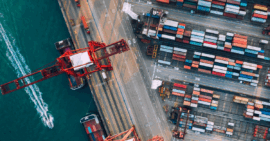The top four regions in terms of the threat of bribery and corruption have been identified as the Middle East and North Africa (61%), Sub-Saharan Africa (59%), Latin America (49%) and Asia Pacific (43%), according to the Global Fraud and Risk Report 2021, published by Kroll, a corporate investigations and risk consulting firm based in New York City.
“[These] regions are frequently perceived to be higher-risk because of certain accepted business practices, lack of transparency in government and weak public institutions,” noted the research summary of the report, entitled “Bridging the Great Divide”.
“Understanding and adapting to these local elements and cultures is a key part of managing bribery and corruption risk,” the summary said.
When considering their organisations, most respondents said that a lack of visibility in terms of third parties such as suppliers, customers and distributors (46%) presented the greatest threat of bribery and corruption, the summary said. By contrast, internal risk areas such as weaknesses in record keeping (31%) or employee actions (23%) were regarded as less significant sources of risk.
Organisations may be more confident about internal risks because they are establishing solid processes to monitor and offset them. The majority (82%) had conducted enterprise-wide risk assessments in the past five years, and 86% are now using proactive data analytics to identify problems before they escalate, the report said.
Responding to the challenge
The report summary quoted the main drivers of a successful anti-bribery and corruption programme as: a strong commitment from senior management to implement an ethical culture; ensuring a proper understanding of risk throughout the organisation; the development of a strong control framework; and the use of data analytics to identify and assess changing risks both inside and outside the organisation.
Respondents said their organisations’ boards of directors were placing a growing focus on bribery and corruption, with 72% believing this challenge was receiving sufficient board-level attention and investment. This opinion was consistent across different sectors, the only notable outlier being the banking industry (53%) — perhaps because it tends to focus on preventing other illicit activities such as money laundering and sanctions breaches. Survey respondents based in Colombia (54%), the Middle East (45%), Australia (42%) and Russia (39%), meanwhile, identified a need for greater board involvement, the summary said.
The vast majority (82%) of organisations had conducted an enterprise-wide risk assessment in the past five years to understand threats across their businesses. The uptake of risk assessments was also generally consistent across all regions, although it was lowest in Germany (63%), Canada (60%) and Russia (59%).
Respondents also had confidence in the ability of their internal control frameworks to detect and prevent high-risk bribery and corruption activities. On average, 74% of respondents said their internal control frameworks were effective.
“This remains true for companies of all sizes … although the least confident respondents were again from the banking sector (60%),” the summary said.
An unexpectedly high number (86%) of organisations are now using data analytics to detect bribery and corruption risk, the survey found. Adoption was particularly high in the Asia-Pacific region — especially in China (98%), Singapore (97%) and India (92%) — as well as in western nations such as the UK (91%) and the United States (91%).
For the 2021 Global Fraud and Risk Report, Kroll conducted an online survey of 1,336 senior decision-makers for risk strategy, including general counsels, chief compliance officers, chief finance officers and chief executives at corporates.
About the author
Yixiang Zeng is a senior correspondent with Thomson Reuters Regulatory Intelligence in Singapore.


